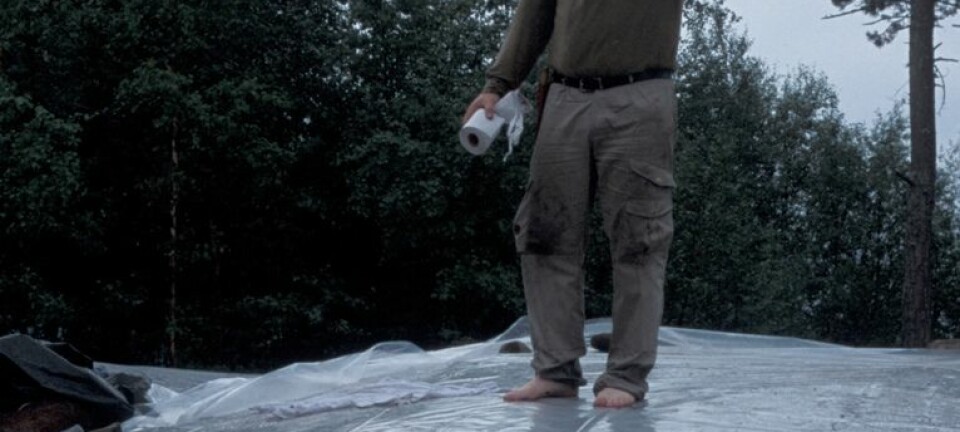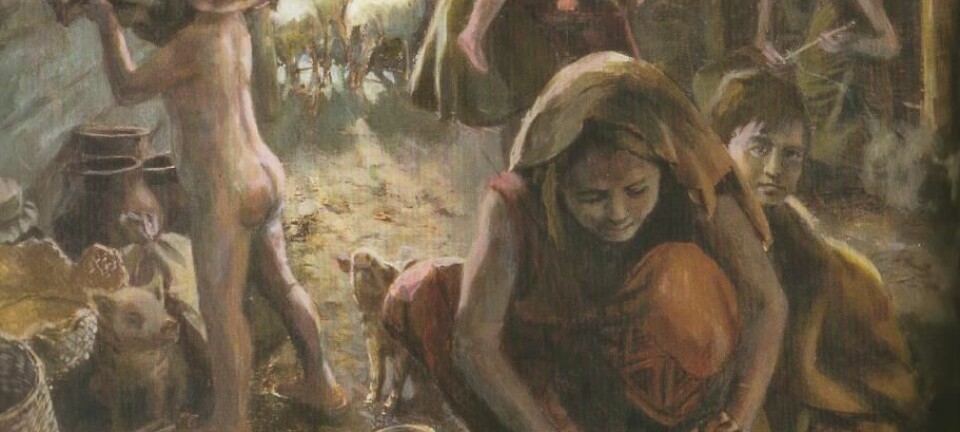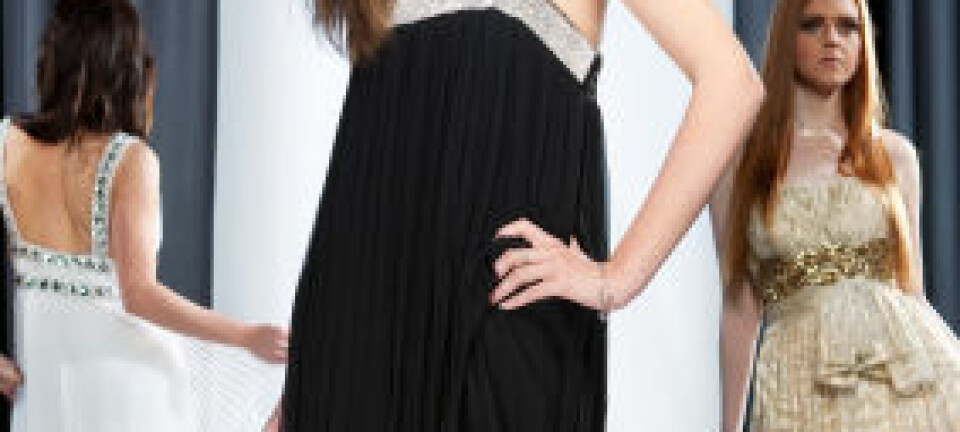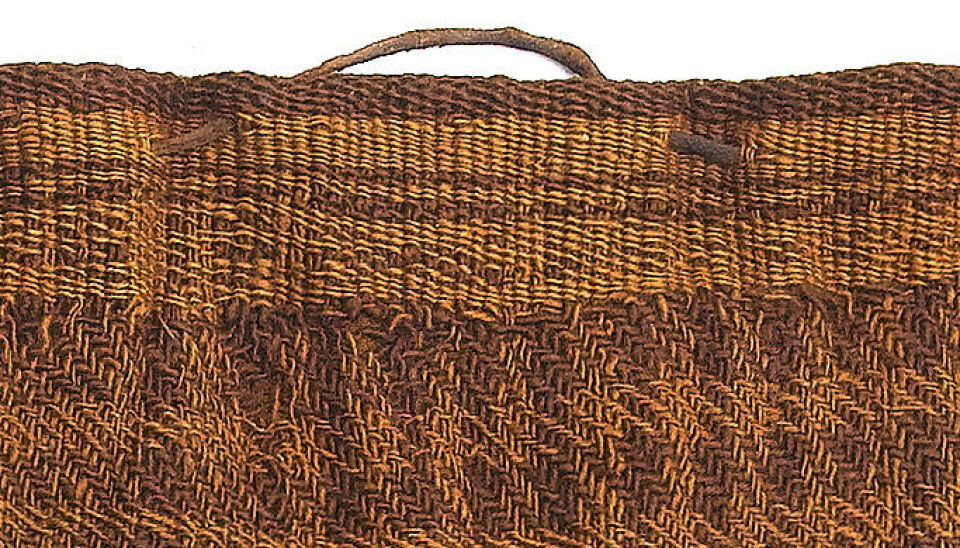
Dyed clothes came into fashion in early Iron Age
Analyses of bog bodies show that dyed clothing became fashionable in the early Iron Age – centuries before previously thought.
Clothes in the early Iron Age were not grey and dull, as previously assumed. They were colourful and patterned.
This new discovery comes as a result of new analyses of 180 textile samples from 26 different bog finds, carried out by Ulla Mannering, a senior researcher and archaeologist at the Danish National Research Foundation’s Centre for Textile Research at the National Museum.
“The beginning of the Iron Age sparked a revolution in fashion in which clothes became coloured and patterned,” she says.
The conventional theory has so far been that colourful textiles only emerged in the centuries after the birth of Christ.
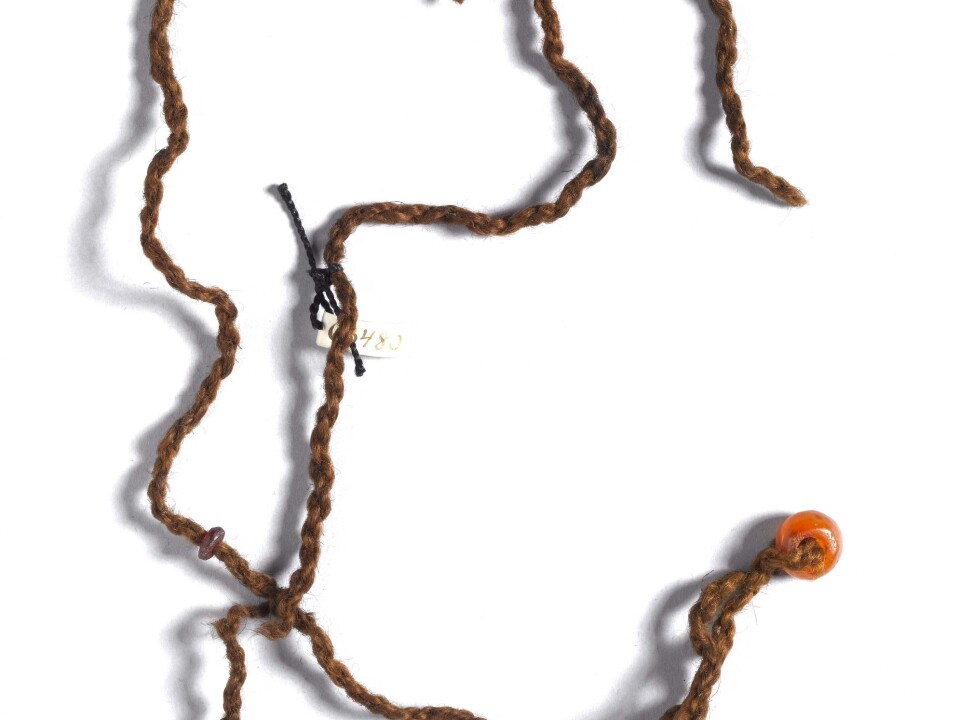
“But our analyses show – quite surprisingly – that colour and pattern came into fashion in the earliest part of the Iron Age. That’s 500 years earlier than previously thought.”
The colours changed people’s world view
The new analyses also show that the bodies, buried in an ancient sacrificial bog, from which the textiles were taken are older than previously thought. Most of them date back to the centuries leading up to Christ’s birth, which makes them more than 2,000 years old.
The discovery challenges the view that the bodies, which had been buried in an ancient sacrificial bog, had been wretches at the bottom of society, prisoners or poor people, who for some reason had been destined to be sacrificed or punished.
“My personal theory is that we should revise our view of the bog finds because they have been buried in a context that is completely different from what we’ve been thinking up to now,” says Mannering.
Clothes make the man
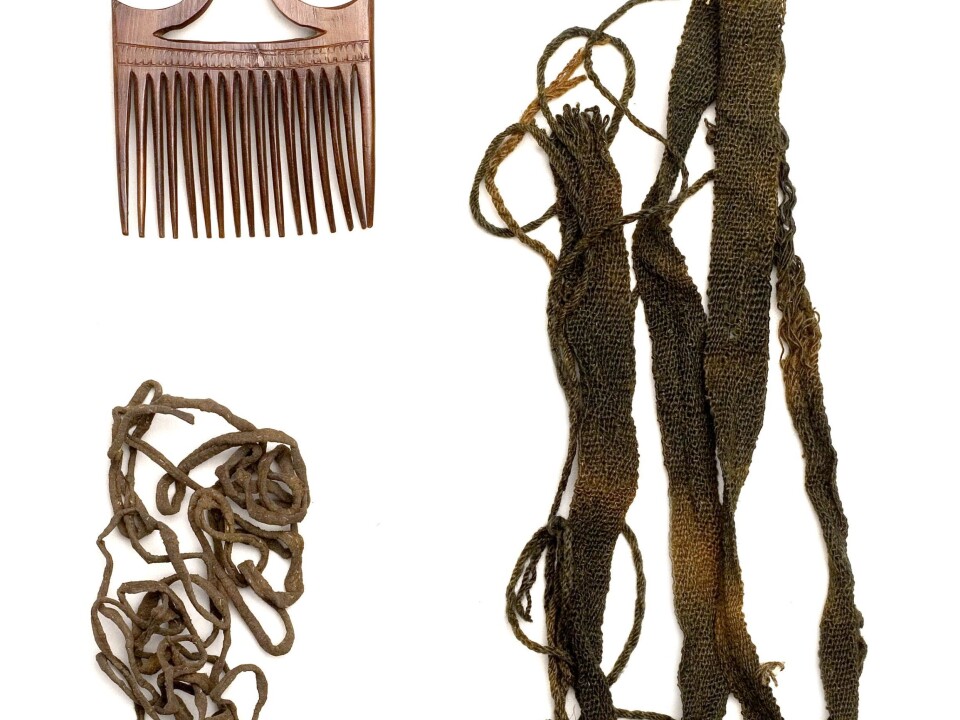
The new findings represent a fresh start in the attempts to understand why the bodies ended up in the bog (see box at the bottom of this article), and the costumes play an important role in this work.
“The textiles suits have not previously been taken into account when assessing the social status these people had,” she says. “By studying their costumes I gain an insight into the contemporary social structure and I learn about these people’s knowledge of this handicraft.”
One bog body that has been of particular interest to Mannering and her colleagues is the woman from Huldremose, whose body was found in a marsh in Jutland 19 May 1879.
Her costume consisted of two sheepskin coats, a skirt and a scarf, woven from naturally coloured wool.
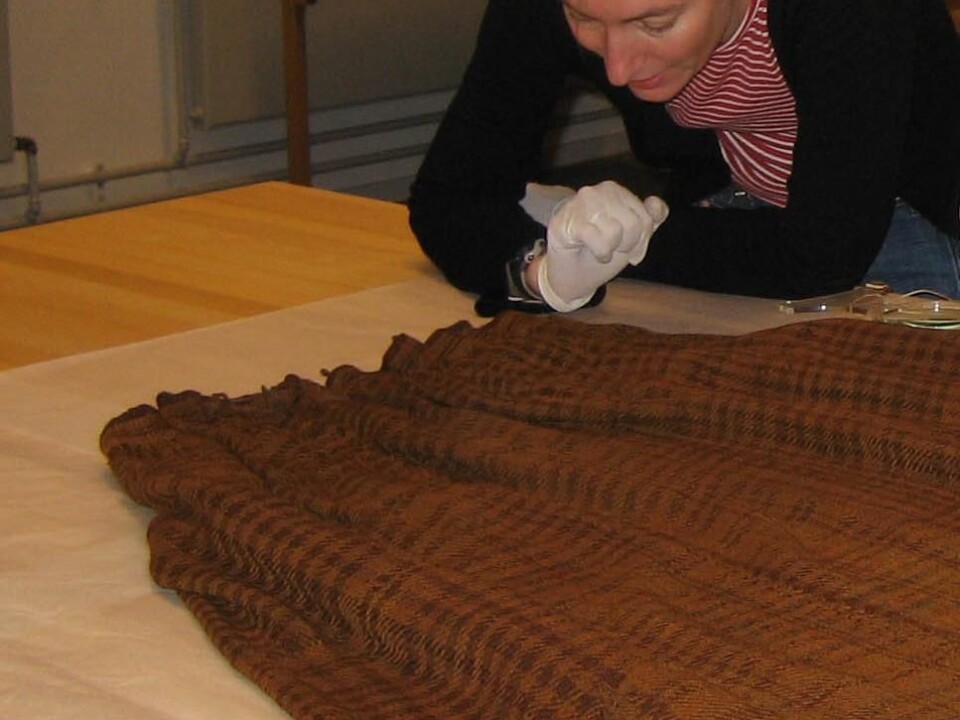
The woman from Huldremose has a wound on one arm, which has been regarded as a sign that she had been beaten and sacrificed to the gods.
However, according to the project’s forensic scientists, the wound is more likely to have appeared after she ended up in the bog.
“The woman from Huldremose is a prime example of how the notion that the bog bodies were punished and poor people does not hold up,” says Mannering.
Costume made of wool from 14 sheep
Upon closer examination, it becomes clear that she was a rich lady.
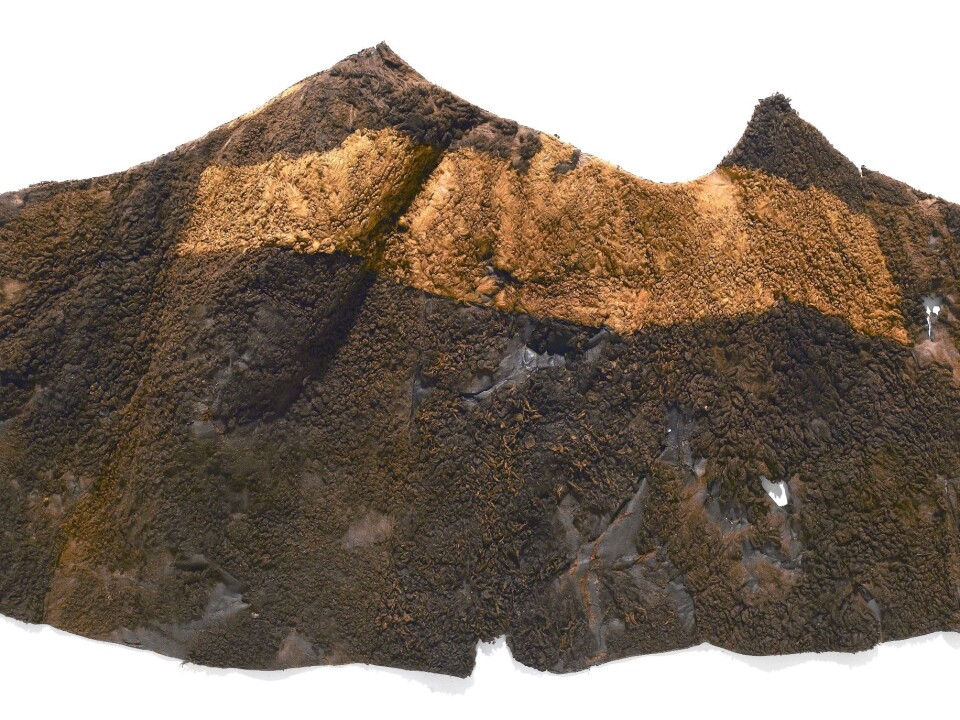
- Her fur coats alone reek of power and status, since they are made from the skins of around 14 sheep, which is a lot for one person.
- She wore a long skirt and a scarf, along with a petticoat made from nettle.
- Not only was her costume of a high quality, it also had many colours, particularly red, which was not widely used at the time. This indicates that she had a high social status.
This tells us that the woman from Huldremose had access to a variety of precious textiles, which rules out the idea that she was poor.
“We don’t know how she died, but her coloured costume suggests a high status,” says the archaeologist. “It’s more likely that she was brought to the bog to be honoured – perhaps because she had a great knowledge about nature, or because she had a special affiliation to the bog, which would have made it a very appropriate final resting place for her.”
Ancient thread reveals past technology
The researchers reached their conclusions by conducting a chemical analysis of samples from the textiles worn by the bog bodies, some of which are extremely well kept and are up to two metres wide.
We found no colours or patterns in Bronze Age costumes. The Bronze Age led up to the Iron Age, so the early Iron Age must have witnessed some great technological advances that have led to garments and clothing designs in all sorts of colours.
The numerous pieces of fabric are a luxury when considering that a single thread is enough for an organic material assay.
In the analysis work, which was conducted at a Belgian research institute, the scientists extracted the chemical components of the textile dyes, which enabled them to map the chemical composition of the colours.
The analyses revealed that as early as in the early Iron Age, people were able to dye their clothes yellow, blue and red.
The manufacture of garments with several different colours has required a mastery of many dyeing techniques that made use of various dyebaths.
The people haven’t simply dyed their clothes in one go; they have freshened up the faded clothes continually.
“We found no colours or patterns in Bronze Age costumes,” says Manning.
“The Bronze Age led up to the Iron Age, so the early Iron Age must have witnessed some great technological advances that have led to garments and clothing designs in all sorts of colours.”
---------------------------------
Read this article in Danish at videnskab.dk
Translated by: Dann Vinther


